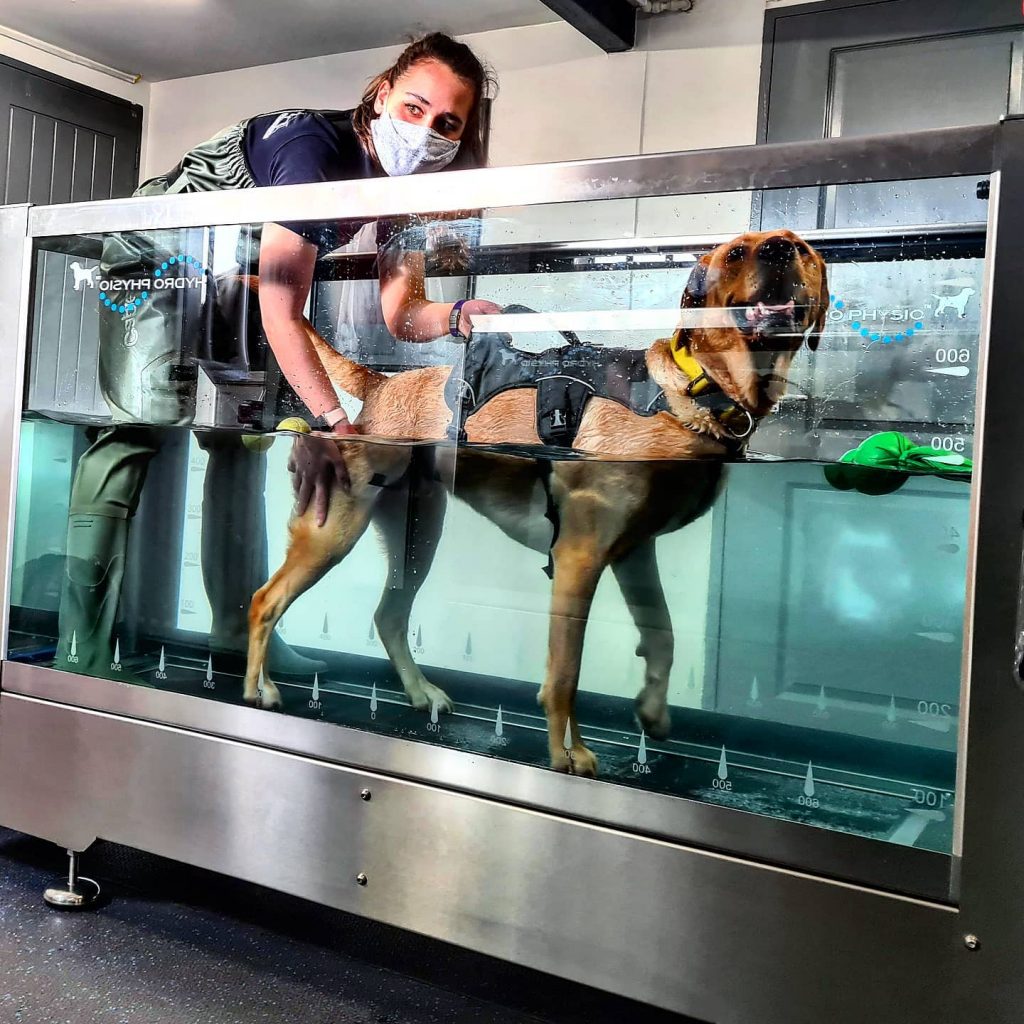The Gold Standard in Physiotherapy and Hydrotherapy for dogs
The Gold Standard in Physiotherapy and Hydrotherapy for dogs

Cervical disc disease is more commonly known as a ‘slipped disc’ in the neck. The discs are the structures between the bones of the spine that act as shock absorbers. They are best thought of as a soft centre inside a fibrous ring.
Discs in dogs degenerate as they get older – just like people. This process results in the discs becoming dehydrated and losing their cushioning effect. They may then ‘slip’ in one of two ways:
Affected dogs may show signs of:
A neurological examination is necessary to detect evidence of spinal cord injury and neck pain. Normal X-rays (radiographs) of the neck may reveal evidence of cervical disc disease, such as a narrowed disc space or a calcified disc. However, more advanced investigations are necessary to see which disc has actually slipped and to assess the severity of any spinal cord compression. Of these advanced imaging techniques, an MRI scan provides the best method of investigating cervical disc disease.
There are two ways to manage cervical disc disease.
Conservative treatment
When dogs with cervical disc disease are managed conservatively their exercise must be restricted. Short walks on a harness for toileting purposes may be necessary, with strict confinement at other times. The hope is that the ‘slipped disc’ will heal, any neck pain subside and the spinal cord recover from any injury. Painkillers may be necessary and possibly other drugs such as muscle relaxants.
Surgery
The aims of surgery are to remove any disc material that is compressing the spinal cord and to prevent any more disc material ‘slipping’. Decompressive surgery involves removing a section of bone from the bottom of the spine to enable retrieval of disc material. Further ‘slipping’ is prevented by removing any remaining material in the centre of the disc.
Rehabilitation therapy is a key component in helping aid the recovery from neurological diseases. Once the vet has diagnosed your pet and completed any surgeries, our team can can step in to aid the long road to recovery.
Initial therapy may include standing exercises, as well as range of motion exercises. These are complimented with pain control and toe pinch exercises. An important part of the retraining is aquatic rehabilitation. Often, with more severe cases, one of our trained neurological hydro therapists will assist the dog whist in our underwater treadmill.
Other exercises include balance exercises, core stability and spacial resistance band walking, physio-roll balancing and home specific exercises. In the hydrotherapeutic environments, the dogs will walk and train with resistance against the water, whether walking or swimming. We also use therapeutic electrotherapies to deep-heat muscles, cryotherapy and laser therapy to aid the recovery process.
Our friendly and skilled physiotherapists are ready to help you and your dog with their rehabilitation.
The content on this page is for advice and information only and does not represent veterinary guidance or direction. Please always consult a veterinary surgeon if you are worries about your dog.